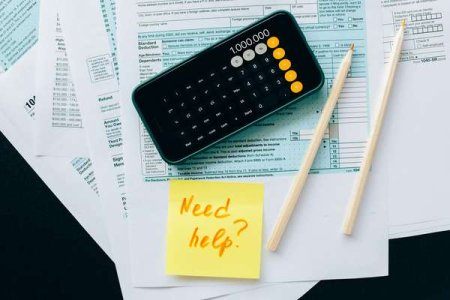Are you at risk? How to protect yourself from the looming retirement savings crisis!
- Replies 0
In the golden years of our lives, we all dream of a retirement filled with leisure, travel, and time spent with loved ones. After all, nothing is sweeter than reaping the fruits of years and years of labor.
But for many Americans, this dream is clouded by a looming concern: will there be enough in the savings pot to enjoy those years worry-free?
Nobody wants to experience unpleasant surprises, so it’s important to stay in the know regarding the updates on your retirement savings.
The AARP Public Policy Institute has sounded the alarm: a staggering 57 million private-sector workers in the U.S. do not have access to a retirement savings plan through their employer.
This estimate represents roughly half of the workforce–these individuals are not offered either a traditional pension or retirement savings plan.

A recent AARP survey paints a grim picture: 20% of adults aged 50 and older have no retirement savings.
Over half are worried they won't have enough funds to support themselves when they stop working.
Meanwhile, individuals in their 50s or early 60s are faced with the crisis of being on the cusp of retirement with insufficient savings.
David John, senior strategic policy adviser at AARP, warns, “It's not a crisis right now, but it's pretty inevitable that it will be.”
He adds that this problem will affect everyone “...because if we're not the ones with the small retirement savings to supplement Social Security, we're going to be the ones who are paying the taxes to help the people who didn't have that opportunity.”
Without adequate funds, retirees may need to lean heavily on public assistance for health care, housing, and other essential services.
This increased demand on social programs could lead to higher taxes for all.

Small businesses are less likely to offer retirement benefits compared to larger corporations.
According to Pew Charity Trusts, only 57% of private-sector firms with fewer than 100 workers provide a retirement plan.
This drops significantly compared to the 86% of companies with at least 100 employees and 91% with at least 500 workers.
For small business owners, the focus is often on survival, leaving little bandwidth for retirement planning.
However, states are stepping up. More than a dozen have initiated or are implementing state-facilitated retirement savings plans for small businesses.
These programs, like California's CalSavers, offer a lifeline to workers without employer-sponsored plans, at no cost to the business.
Greg McBride, chief financial analyst for Bankrate, points out a critical oversight: many workers don't realize they can still save for retirement independently.
“Something lost on consumers is that lack of access to a retirement savings plan through your employer doesn't mean that you can't save for retirement on a tax-advantaged basis,” McBride remarks.

The Individual Retirement Account (IRA) is an opportunity for someone or their spouse, with whom they jointly file taxes with, to gain tax advantages for retirement savings. This account is open for as long as you have an earned income.
As per the IRS, there are many types of IRAs available.
There’s a traditional IRA, with potential tax-deductible contributions, or a Roth IRA, with tax-free qualified distributions, these accounts offer tax advantages to bolster retirement savings.
While he recognizes that it is more challenging due to the lack of employee match and lower contribution limits, McBride believes that workers should explore the benefits of these accounts.
Since we’re on the subject of preparing a plan that allows us to experience a relaxing retirement, it’s also important to know how we can maximize our existing benefits. In this story, you can learn how to stretch your social security benefits to your greatest advantage!

Have you started planning for your retirement, or have you found creative ways to save? Perhaps you have concerns or questions about the current retirement landscape? Share your stories and insights in the comments below!
But for many Americans, this dream is clouded by a looming concern: will there be enough in the savings pot to enjoy those years worry-free?
Nobody wants to experience unpleasant surprises, so it’s important to stay in the know regarding the updates on your retirement savings.
The AARP Public Policy Institute has sounded the alarm: a staggering 57 million private-sector workers in the U.S. do not have access to a retirement savings plan through their employer.
This estimate represents roughly half of the workforce–these individuals are not offered either a traditional pension or retirement savings plan.

This isn't a new issue; it's a decades-old problem that's only growing more acute as the population ages. Image source: Pexels.
A recent AARP survey paints a grim picture: 20% of adults aged 50 and older have no retirement savings.
Over half are worried they won't have enough funds to support themselves when they stop working.
Meanwhile, individuals in their 50s or early 60s are faced with the crisis of being on the cusp of retirement with insufficient savings.
David John, senior strategic policy adviser at AARP, warns, “It's not a crisis right now, but it's pretty inevitable that it will be.”
He adds that this problem will affect everyone “...because if we're not the ones with the small retirement savings to supplement Social Security, we're going to be the ones who are paying the taxes to help the people who didn't have that opportunity.”
Without adequate funds, retirees may need to lean heavily on public assistance for health care, housing, and other essential services.
This increased demand on social programs could lead to higher taxes for all.

A 20% proportion of adults aged 50 and above have no retirement savings, with more than half concerned about not having sufficient funds for retirement. Image source: Pexels.
Small businesses are less likely to offer retirement benefits compared to larger corporations.
According to Pew Charity Trusts, only 57% of private-sector firms with fewer than 100 workers provide a retirement plan.
This drops significantly compared to the 86% of companies with at least 100 employees and 91% with at least 500 workers.
For small business owners, the focus is often on survival, leaving little bandwidth for retirement planning.
However, states are stepping up. More than a dozen have initiated or are implementing state-facilitated retirement savings plans for small businesses.
These programs, like California's CalSavers, offer a lifeline to workers without employer-sponsored plans, at no cost to the business.
Greg McBride, chief financial analyst for Bankrate, points out a critical oversight: many workers don't realize they can still save for retirement independently.
“Something lost on consumers is that lack of access to a retirement savings plan through your employer doesn't mean that you can't save for retirement on a tax-advantaged basis,” McBride remarks.

According to McBride, the “lack of employee-sponsored retirement savings isn't a barrier to saving for retirement.” Image source: Pexels.
The Individual Retirement Account (IRA) is an opportunity for someone or their spouse, with whom they jointly file taxes with, to gain tax advantages for retirement savings. This account is open for as long as you have an earned income.
As per the IRS, there are many types of IRAs available.
There’s a traditional IRA, with potential tax-deductible contributions, or a Roth IRA, with tax-free qualified distributions, these accounts offer tax advantages to bolster retirement savings.
While he recognizes that it is more challenging due to the lack of employee match and lower contribution limits, McBride believes that workers should explore the benefits of these accounts.
Since we’re on the subject of preparing a plan that allows us to experience a relaxing retirement, it’s also important to know how we can maximize our existing benefits. In this story, you can learn how to stretch your social security benefits to your greatest advantage!
Key Takeaways
- Approximately 57 million private sector workers in the U.S. lack access to a workplace retirement savings plan, which could lead to a future retirement savings crisis.
- A 20% proportion of adults aged 50 and above have no retirement savings, with more than half concerned about not having sufficient funds for retirement.
- Some states have initiated state-facilitated retirement savings plans for small businesses, which do not incur costs for the employers.
- Individuals have the option of contributing to an Individual Retirement Account (IRA) independently, offering tax advantages for retirement savings, despite the absence of employer-sponsored plans.
Have you started planning for your retirement, or have you found creative ways to save? Perhaps you have concerns or questions about the current retirement landscape? Share your stories and insights in the comments below!






